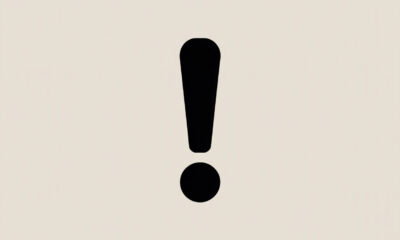informational
How to Write Sarcasm Using Quotes: Complete Guide 2025

Trying to write sarcasm is like trying to pat a cat on the head over the phone. Without a tone of voice or a raised eyebrow, your clever jab can land with a thud or, worse, be taken seriously. You end up with writing as flat as a Kansas landscape. This guide offers practical tips with good examples to help you use quotation marks for sarcasm. Whether you are writing an essay or a more formal piece, this guide will help you do it with confidence.
What Are Sarcasm Quotes and When to Use Them
Sarcasm quotes, or “scare quotes,” are just quotation marks put around a word or phrase to show you don’t really mean it. Think of it as the written version of an air-quote gesture. It puts a little distance between you and a word, telling the reader, “Hey, I’m not buying what this word is selling.”
These quotes can:
- Contrast literal versus figurative meaning
- Express doubt about a term’s validity
- Mock euphemisms
- Expose hypocrisy or false claims
Examples:
- Regular quotes: She said the food was “delicious.” (This reports her exact words.)
- Sarcasm quotes: The “delicious” meal consisted of burnt toast and watery eggs. (This shows the meal was anything but delicious.)
The difference is small but important. Sarcasm quotes don’t mark a direct quotation, they signal doubt or irony about the enclosed term 1. This technique transforms a straightforward statement into biting commentary.
For more on sarcasm’s use in literature, you can review Study.com’s lesson on the topic 20.
Historical Origins of Sarcasm Quotes
The term “scare quotes” was first recorded in 1956 by philosopher Elizabeth Anscombe, but the idea is much older. Ancient Greek writers used special marks for similar purposes. Modern quotation marks grew from 16th-19th century citation marks into tools for rhetoric.
Notable literary examples:
- F. Scott Fitzgerald used them in The Great Gatsby (Tom’s “Oxford man” reference).
- George Orwell used them in 1984 for propaganda terms like “freedom” and “truth.”
And so it goes, the little marks on a page leaped into the air, becoming a gesture people make when they want to look smart at a party.
Step 1: Identify the Right Words for Sarcastic Quotation Marks
Not every word needs to be put in quote-jail. The best candidates for sarcastic quotes are:
- Single words or short phrases (not whole sentences)
- Overused jargon or buzzwords
- Euphemisms that hide the truth
- Claims you want to question
- Terms that contradict what is plainly real
Strong candidates include:
- “Expert” (for someone clearly unqualified)
- “Natural” (for a highly processed product)
- “Efficient” (for a system that is a mess)
- “Rescue” (for an action that makes things worse)
- “Luxury” (for something basic or shabby)
The whole point is to pick a word where the difference between what’s claimed and what’s real is wide enough to drive a truck through 2. Knowing how to use examples of sarcasm with quotes improves your writing’s wit.
Step 2: Place Quotation Marks Correctly
Where you put the quotes matters for them to work.
| Correct | Incorrect |
|---|---|
| The “luxury” hotel had broken plumbing. | The “luxury hotel” had broken plumbing. |
| Their “eco-friendly” process uses toxic chemicals. | Their eco-“friendly” process uses toxic chemicals. |
Rules to follow:
- Use double quotation marks in American English.
- Place quotes directly around the target word(s) with no extra spaces.
- In American usage, periods and commas go inside the quotation marks.
- Question marks and exclamation points go outside unless they are part of the quoted material.
Remember that British English may use slightly different punctuation rules.
What Major Style Guides Say About Sarcasm Quotes
| Style Guide | Position on Sarcasm Quotes | Frequency Recommendation | Key Rule |
|---|---|---|---|
| APA 7th Edition | Use for irony and nonstandard terms | First mention only | Double quotes standard 5 |
| Chicago Manual 17th | Warns against overuse | Very sparingly | Avoid irritating the reader 4 |
| MLA Handbook 9th | Use to show distance from questionable terms | Minimally | Never use only for emphasis 3 |
Common applications across guides:
- Irony/Doubt: Women achieved “equality” when granted voting rights in 1920.
- Slang/Coined Terms: The school offers a “free” lunch to every student.
- Distance: He shared his “wisdom” with us.
The big shots who write the style guides all agree: don’t go crazy with these things 3, 4, 5. If you can say it plainly, just say it plainly.
Step 3: Create Clear Contrast Between Reality and Claims
Quotes alone are not enough, you need to build context that makes the sarcasm obvious:
“The ‘five-star’ resort featured stained carpets, peeling wallpaper, and a staff that seemed actively annoyed by our presence.”
Here, the contrast between the “five-star” claim and the real description makes the sarcasm clear. Without this context, readers might miss your point.
Effective sarcasm quotes need:
- To set reader expectations.
- Details that contradict the quoted term.
- Enough context for readers to see the irony.
And get this: studies show that the quotes by themselves do not significantly help readers understand ironic content. It’s the context, the setup, that does the heavy lifting.
Step 4: Use Sparingly for Maximum Impact
The fastest way to ruin sarcasm is to overuse it. Style guides all recommend using sarcasm quotes sparingly, ideally no more than once per paragraph.
Overused:
“Their ‘amazing’ ‘customer service’ team ‘helped’ me by ‘solving’ my ‘simple’ problem after ‘only’ three weeks of calls.”
Better:
Their “amazing” customer service team helped me by solving my simple problem after only three weeks of calls.
Overusing them is like salting your coffee. It doesn’t make it better; it just makes it undrinkable. When everything is “sarcastic,” nothing is. If you’re wondering if you can use quotation marks for sarcasm in an essay, the answer is yes, just use them with restraint.
Step 5: Drop Quotes After First Mention
Major style guides suggest using sarcasm quotes only the first time you introduce a questionable term 5. After that, you can drop them.
First mention: The company’s “revolutionary” product is essentially a rebranded version of their previous model.
Subsequent mentions: This revolutionary product costs twice as much despite having identical components.
Once you’ve put a word in quote-jail, you don’t need to keep doing it. Your reader gets the point. This strategy is important for keeping your writing polished and effective.
Cross-Cultural Considerations
The rules for sarcasm change a lot between languages and cultures.
Global Patterns:
- Spanish: Relies on tone and context; few punctuation rules.
- French: Uses tone and ironic phrasing; sometimes uses italics.
- German: Emphasizes deadpan delivery and understatement.
- Mandarin/Cantonese: Uses pitch changes; no formal written signs.
The truth is, most languages don’t have a special punctuation mark for sarcasm. People just have to rely on tone of voice and paying attention to figure it out. This makes the English use of quotation marks for sarcasm somewhat unusual.
Professional and Legal Risks
Before you get clever in a business contract or an email to your boss, stop and think. It can blow up in your face.
How People Get It Wrong:
- Misinterpretation leading to incorrect actions.
- Loss of clear meaning.
- Reader confusion and poor communication.
Workplace Consequences:
- Annoying or offending readers.
- Appearing unprofessional.
- Potential discipline at work.
- Violating academic honesty codes.
Legal Problems:
- Ambiguity in contracts, making them hard to enforce.
- Disputes over unclear language.
- Violating standards for clear legal writing.
People have been disciplined at work for sarcastic insubordination, and unclear writing has led to serious confusion in business.
How Scare Quotes Affect a Reader’s Brain (and What They Think of You)
When a reader’s eye hits those little marks, a tiny alarm goes off in their brain. It signals them to stop reading literally and start looking for the joke or the criticism. They have to connect the dots you have laid out for them.
As for your credibility, it’s a balancing act. Use them well, and you sound sharp. Overdo it, and you come off as condescending or just plain tiresome. The main takeaway from brain-science folks is that context is king. The quotes are just the jester.
Common Mistakes That Kill Your Sarcastic Writing
Avoid these common errors that weaken your sarcastic quotes:
- Using quotes for emphasis instead of sarcasm
- Wrong: This is a “serious” problem that needs immediate attention.
- Right: This is a serious problem that needs immediate attention.
- Redundant phrasing with “so-called”
- Wrong: These “so-called” experts have no credentials.
- Right: These “experts” have no credentials.
- Creating ambiguous meanings
- Confusing: He’s a “talented” programmer.
- Clear: He’s a “talented” programmer who can’t debug basic errors.
- Overusing quotes until readers ignore them
- Exhausting: The “luxury” cruise ship offered “gourmet” meals and “premium” entertainment.
- Effective: The luxury cruise ship offered “gourmet” meals consisting of cafeteria-style buffets.
Examples of Sarcasm Quotes That Actually Work
Here are real-world examples of effective sarcasm quotes:
Social Media Commentary:
“Just spent three hours with tech support for my ‘user-friendly’ smart TV.”
Product Review:
“The ‘waterproof’ watch stopped working after a light rain shower.”
News Commentary:
“The politician’s ‘clarification’ only raised more questions about the scandal.”
Casual Writing:
“Mike’s ‘shortcut’ added an extra hour to our trip.”
Professional Context:
“The ‘minor’ software update crashed our entire system.”
The effectiveness comes from clear context and letting the contradiction between the quoted term and reality provide the humor. For more examples, see YourDictionary’s article on types and examples of sarcasm 21.
Alternatives When Quotes Don’t Work
When sarcasm quotes might confuse readers or seem unprofessional, try these options:
- Use “so-called” before the term: “The so-called experts had no relevant experience.”
- Use “alleged” or “supposedly”: “The allegedly leak-proof container spilled immediately.”
- Use descriptive phrases: “The marketing team calls it groundbreaking, but the design is identical to last year’s model.”
- Use understatement: “The hotel room, advertised as luxurious, barely fit the bed.”
- Consider sarcasm text symbols like /s or 🙃 for informal messages.
These alternatives often work better in formal writing while keeping your skeptical tone.
Testing Your Sarcastic Writing on Readers
Before you hit “send” or “publish,” ask yourself these questions:
- Would a reader without context understand my sarcastic point?
- Have I used sarcasm quotes no more than once per paragraph?
- Does the text around the quotes make it clear why I’m questioning the term?
- Would my audience recognize the contradiction I’m highlighting?
- Have I tried reading it aloud to hear if the tone works?
When in doubt, get feedback from someone who doesn’t know your topic. If they miss the sarcasm, rewrite it until it’s impossible to miss 3.
Conclusion
Using sarcasm quotes correctly takes careful word choice, proper placement, clear context, and restraint. When done right, quotation marks add layers of meaning to your writing, letting you communicate doubt and irony effectively.
In the end, it comes down to judgment. Sometimes a word needs to be put in quotes, and sometimes you just need to say the thing straight. With a little practice, you’ll get a feel for it. You’ll learn how to use these little marks to make your writing sharper, funnier, and a little more honest. And so it goes.
Frequently Asked Questions
How to use quotation marks for irony?
Place double quotation marks around specific words or short phrases you want readers to question. Make sure the surrounding text creates a clear contrast with the quoted term. For example: “The ‘simple’ instructions required an engineering degree to decipher.” Use this technique with restraint, once per paragraph at most 2.
Can quotation marks be used sarcastically?
Yes, quotation marks can show sarcasm in writing. Known as scare quotes, they signal that you’re skeptical of the enclosed term. The key is to provide enough context so readers understand you’re questioning the accuracy of the quoted word or phrase 1.
How do you indicate something is a quote?
For actual quotations (someone’s exact words), use standard double quotation marks: She said, “I’ll be there at noon.” For sarcastic use, place quotes only around the specific term you’re questioning: Her “punctual” arrival came two hours after the agreed time. The context makes it clear which one you’re doing.
How to text sarcastically?
In text messages, use quotation marks around words to show sarcasm: Can’t wait for this “fun” meeting. You can also use the /s tag at the end of a statement: This day just keeps getting better /s. Some people use the upside-down smiley 🙃 or alternating caps: ThIs Is ToTaLlY gOiNg To WoRk. However, quotation marks are still the clearest and most common method.
1: https://www.grammar-monster.com/lessons/quotation_(speech)_marks_meaning_alleged_so-called.htm
2: https://thewritepractice.com/when-you-use-quotation-marks/
3: https://style.mla.org/quotes-when-nothing-is-being-quoted/
4: https://www.chicagomanualofstyle.org/qanda/data/faq/topics/Punctuation/faq0014.html
5: https://apastyle.apa.org/style-grammar-guidelines/punctuation/quotation-marks
20: https://study.com/learn/lesson/sarcasm-literature-explanation-examples.html
21: https://www.yourdictionary.com/articles/examples-sarcasm-meaning-types















